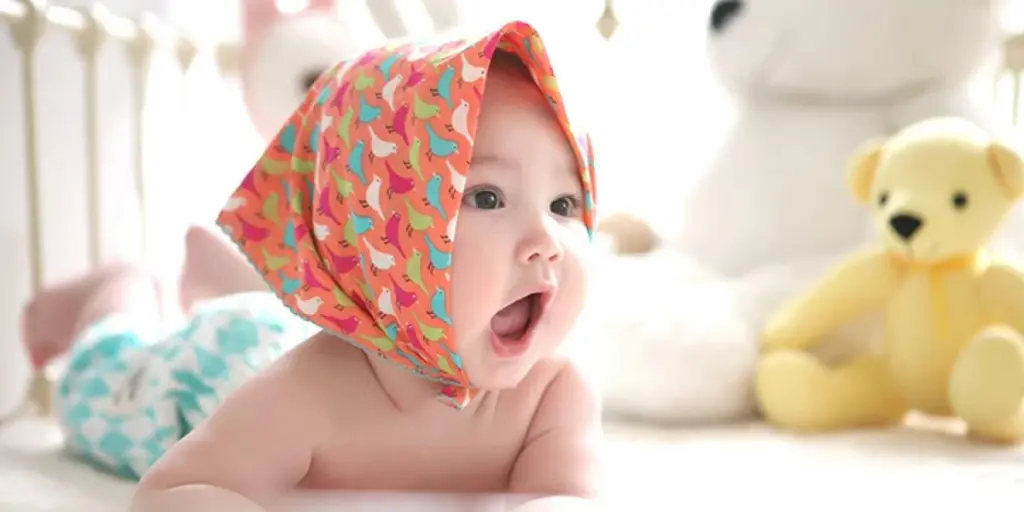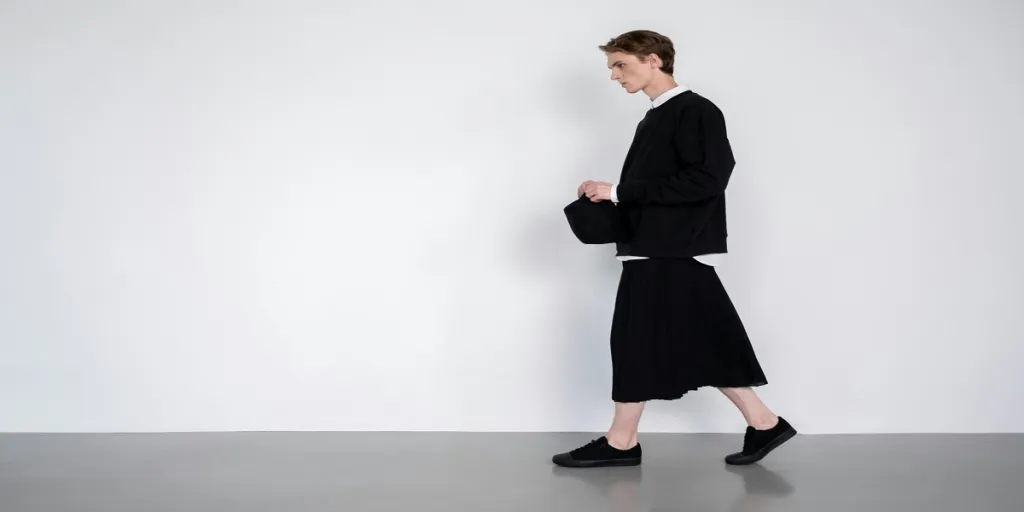Jewelry is one of the most ubiquitous accessories in fashion. But despite its generality, jewelry comes in different forms and grades. Some consumers may use them to flaunt a luxurious lifestyle, while others have some kind of attachment to their jewelry (emotional or otherwise).
But like every other fashion category, jewelry’s innovations often lead to new trends flooding the market. This article will explore seven attention-grabbing trends that saw amazing growth in 2023 and will likely see continued growth into 2024.
Table of Contents
What’s the current state of the global jewelry market?
7 jewelry trends making waves in the fashion world in 2024
Leverage these trends in 2024
What’s the current state of the global jewelry market?
In 2023, the global jewelry market reached US $353.26 billion in value. However, experts forecast the market will grow from its current 2024 value (US $366.79 billion) to US $482.22 billion by 2030 at a 4.7% compound annual growth rate (CAGR).
The industry’s growth drivers include increasing consumer disposable income, innovative jewelry designs, and changing perceptions of jewelry as a status symbol. Take a look at other jewelry market statistics:
- Rings dominated the product market with a 33.8% market share. Experts predict this segment will hold its dominance over the forecast period.
- Experts also predict that the earring and bracelet segments will grow at a 4.5% and 4.0% CAGR, respectively.
- While gold dominates the jewelry material market, diamonds are set to grow at a 4.0% CAGR over the forecast period.
- Asia-Pacific currently leads the regional jewelry market by contributing 59.9% of the global revenue.
7 jewelry trends making waves in the fashion world in 2024
1. Permanent jewelry
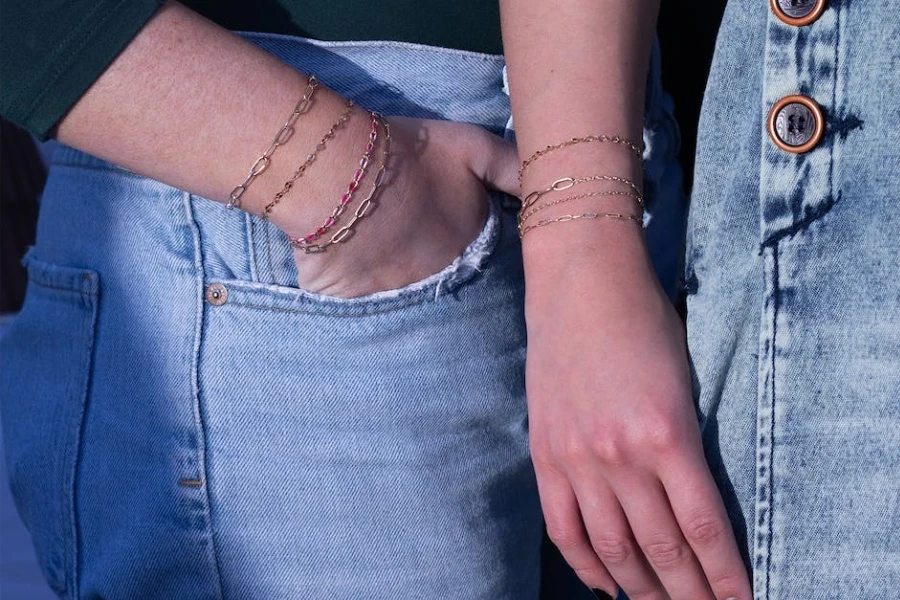
It is well known that jewelry can be more than an eye-grabbing accessory. Sometimes, it can symbolize a relationship or represent a powerful emotional connection to a person. Permanent jewelry (usually a necklace or bracelet) is a new category of accessories that plays into these human emotions.
These accessories are nothing like the regular easy-to-wear and remove pieces. Instead, jewelers wield them together to create something that won’t have to be removed frequently. Although such accessories are indeed permanent, they are easy to take off with a pair of scissors.
Bracelets are the most popular type of permanent jewelry. However, sellers can stock up on other types, including anklets, necklaces, and rings. Permanent jewelry has also grown by 30% over the past year, placing it at 201,000 searches in January 2024 (based on Google Ads data).
2. Everyday wear
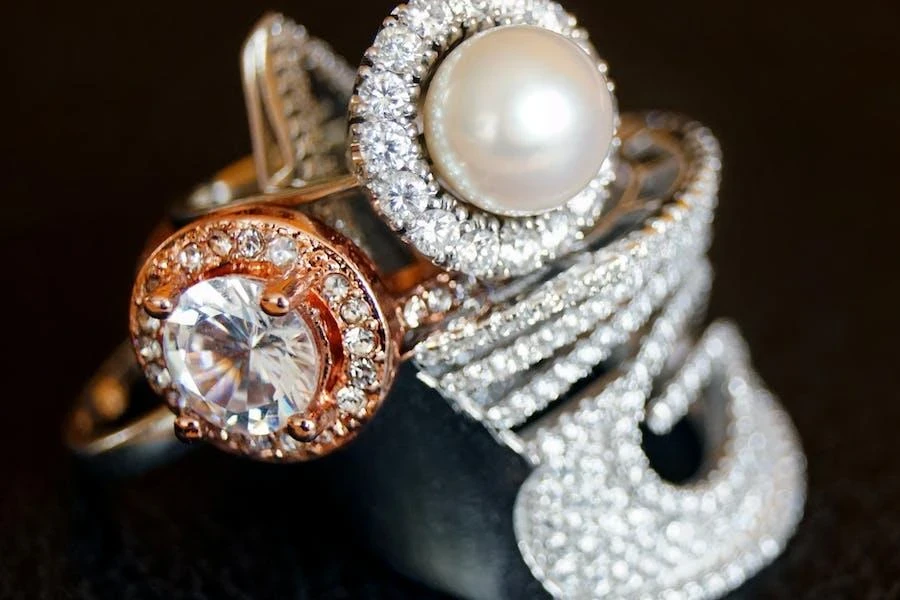
Everyday jewelry is like having a permanent accessory without any permanence. These pieces are the ones consumers rarely take off, like they are a part of their body. Even more interesting is that everyday jewelry’s rise is driven not by celebrity dynamics but by pure consumer behavior.
Whether it’s a necklace, earrings, rings, or bracelet, everyday jewelry offers the most comfort, considering consumers will wear it daily. Hence, such jewelry pieces are always lighter, making it feel like consumers are wearing nothing.
Flat-back earrings and waterproof jewelry are two categories of everyday wear that have grown over the past year. While flat backs are popular for their maximum comfort (increased by 63% in the past year to 5.7k searches monthly), waterproof jewelry is gaining more attention due to a spike in interest in water-resistant accessories (33% growth with 16k searches per month volume).
3. Lab-grown diamonds
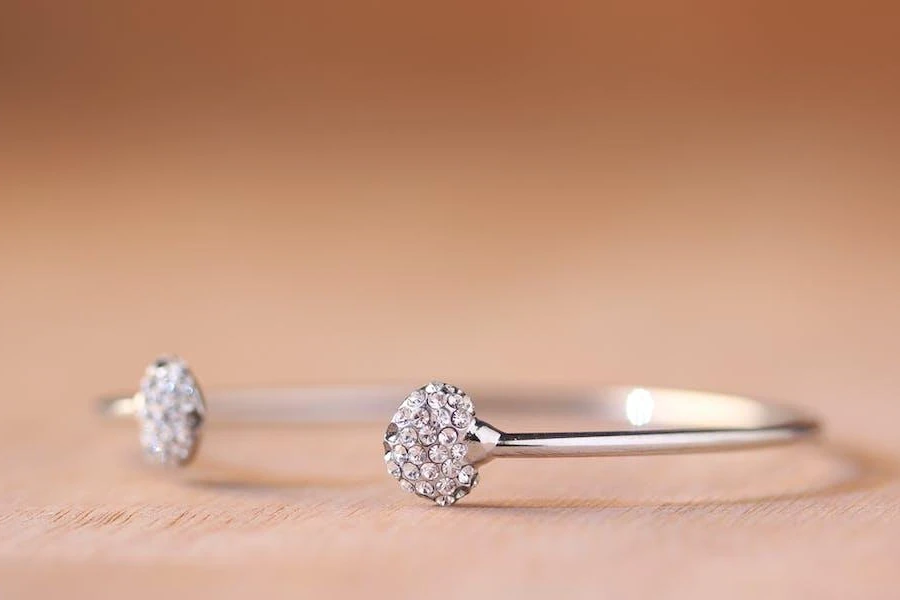
Jewelry industry analyst Paul Zimnisky states that man-made diamond sales grew from less than US $1 billion in 2016 to under US $12 billion in 2022, accounting for more than 10% of global diamond jewelry sales. He also expects this growth to continue over the years.
It is tough to differentiate between lab-grown diamonds and mine variants. Man-made diamonds have similar physical, chemical, and optical properties to their natural counterparts. The world is shifting toward ethical work practices, so many consumers prefer diamonds without human rights concerns at mines.
But more importantly, lab-grown diamonds are significantly cheaper (about 60% to 85% less) than natural ones. So, lab-grown diamond jewelry comes with similar quality to natural ones at a better price—no wonder they’re trending!
4. Gender-neutral jewelry
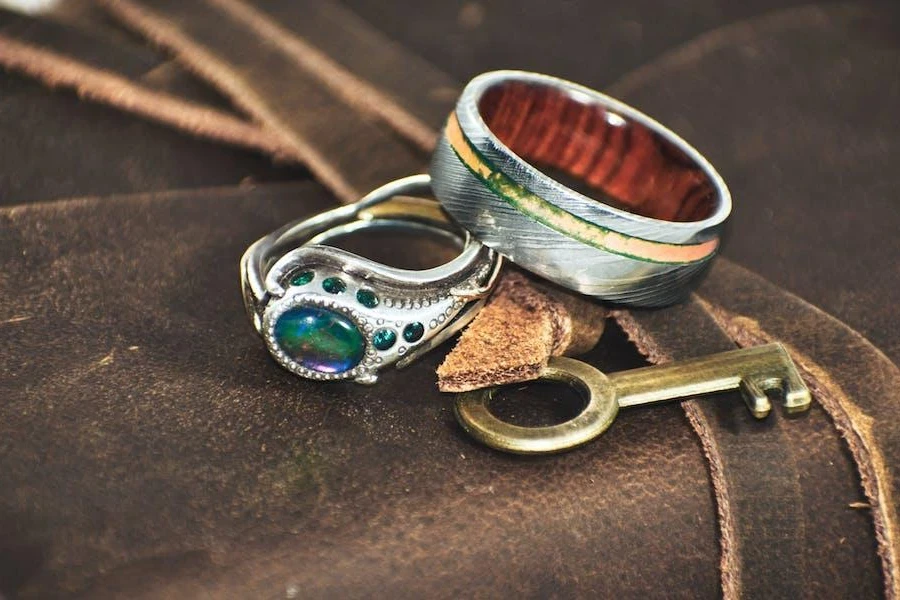
The fashion world is combating the limits set by gender norms. The new rule these innovators follow is that there are no rules! Fluid fashion has become revolutionary, and that effect has extended to the jewelry sector.
With the lines between men’s and women’s jewelry blurring out of existence, gender-neutral accessories are basking in the spotlight. Celebrities like Harry Styles have pushed this narrative, allowing it to capture the hearts of consumers (especially young people) with no rules for design or materials.
The point of gender-neutral jewelry is to adorn, not indicate gender identity. Now, bracelets, necklaces, rings, and earrings have entered the unisex spotlight. Gender-neutral jewelry is set to grow in 2024, with brands like Spinelli Kilcollin growing by 84% over the past year, reaching 4.3k searches monthly.
5. Hypoallergenic jewelry
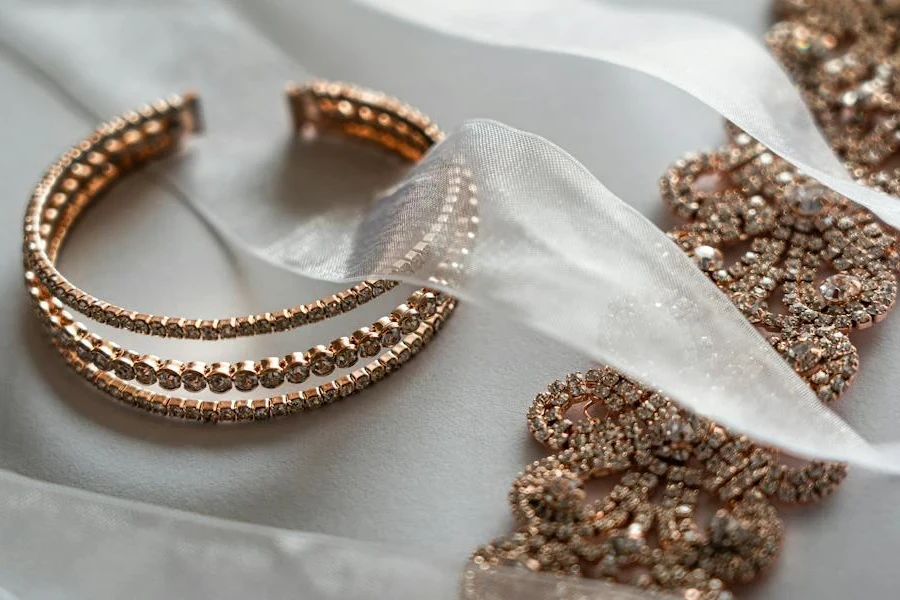
Not everyone can handle exposure to certain metals (especially nickel) popular in jewelry production. Hence, consumers with sensitive skin often prioritize hypoallergenic jewelry over other types, helping to increase demand for these accessories.
Hypoallergenic jewelry has a minimal to 0% chance of causing allergic reactions. Instead of nickel, these accessories contain pure metals like titanium, platinum, stainless steel, sterling silver, etc.
Approximately 17% of consumers suffer from allergic reactions to nickel or other metals. For this reason, manufacturers are creating more hypoallergenic jewelry, filling the market with more options than ever. The best part is that being hypoallergenic doesn’t mean these accessories won’t look great—people won’t be able to tell the difference from a first glance!
6. Ethical and sustainable materials
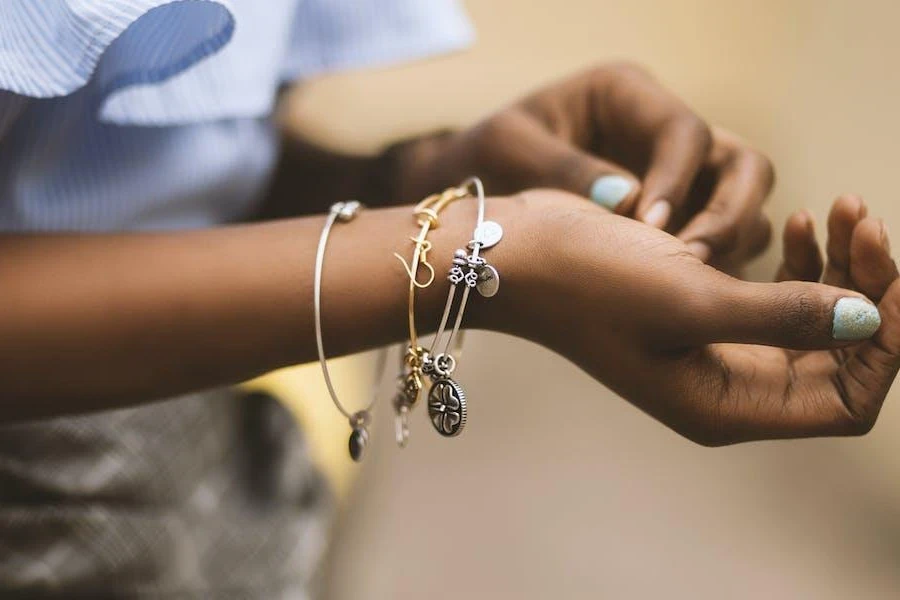
Since movies like Blood Diamond brought terrible work practices to the public, the jewelry industry has been making great progress. Although the industry has a lingering bad reputation, ethical and sustainable materials are now a huge trend for jewelry.
Instead of harming workers and local communities, ethical gemstones come from artisanal miners and fully transparent companies committed to working with local communities and reducing environmental impact.
The emergence of lab-grown gemstones is also part of this trend. The drive for ethical and sustainable materials has helped reduce the cost of gems while significantly reducing their environmental impact.
Jewelry makers also prioritize biodegradable materials like bone, wood, and other plant-based materials. Pieces made from such materials have a minimal carbon footprint and won’t add to landfills at the end of their use.
7. Upcycled and repurposed material
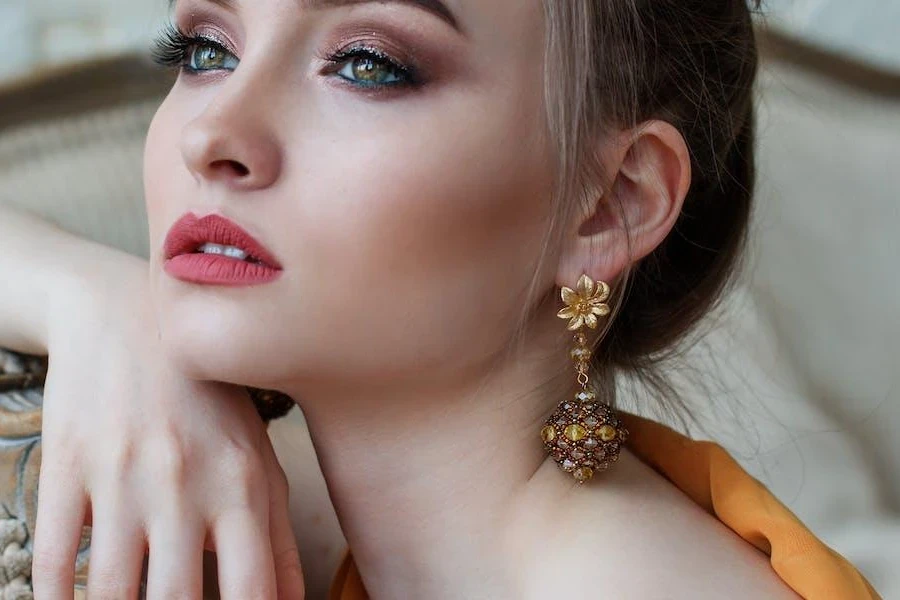
The eco-friendly transformation of the jewelry industry didn’t end with ethical and sustainable practices. Recycling and repurposing materials also became a huge hit for the industry and is still set to grow over the years.
Opting for recycled materials (especially metal) reduces the demand for new ore. This move helps prevent deforestation and foraging for new mining sites. Plus, using recycled materials also helps preserve natural environments, significantly reducing carbon emissions.
Gold, silver, and platinum are all easy-to-recycle materials. Jewelry makers can easily melt them without compromising quality. More importantly, spotting the difference between recycled and freshly-sourced materials is tough! They all look dazzling and eye-catching.
Leverage these trends in 2024
Jewelry remains one of the most profitable markets globally. Consumers purchase these accessories for various reasons. Some may want to complement their outfits, while others attach memories, making them even more special—all reasons why the industry won’t die out anytime soon.
However, new trends are flooding the market to ensure it remains relevant in the consumer’s eyes. Permanent jewelry, everyday wear, lab-grown diamonds, gender-neutral jewelry, hypoallergenic jewelry, ethical/sustainable materials, and upcycled/repurposed materials are the jewelry trends that will remain relevant in 2024.


